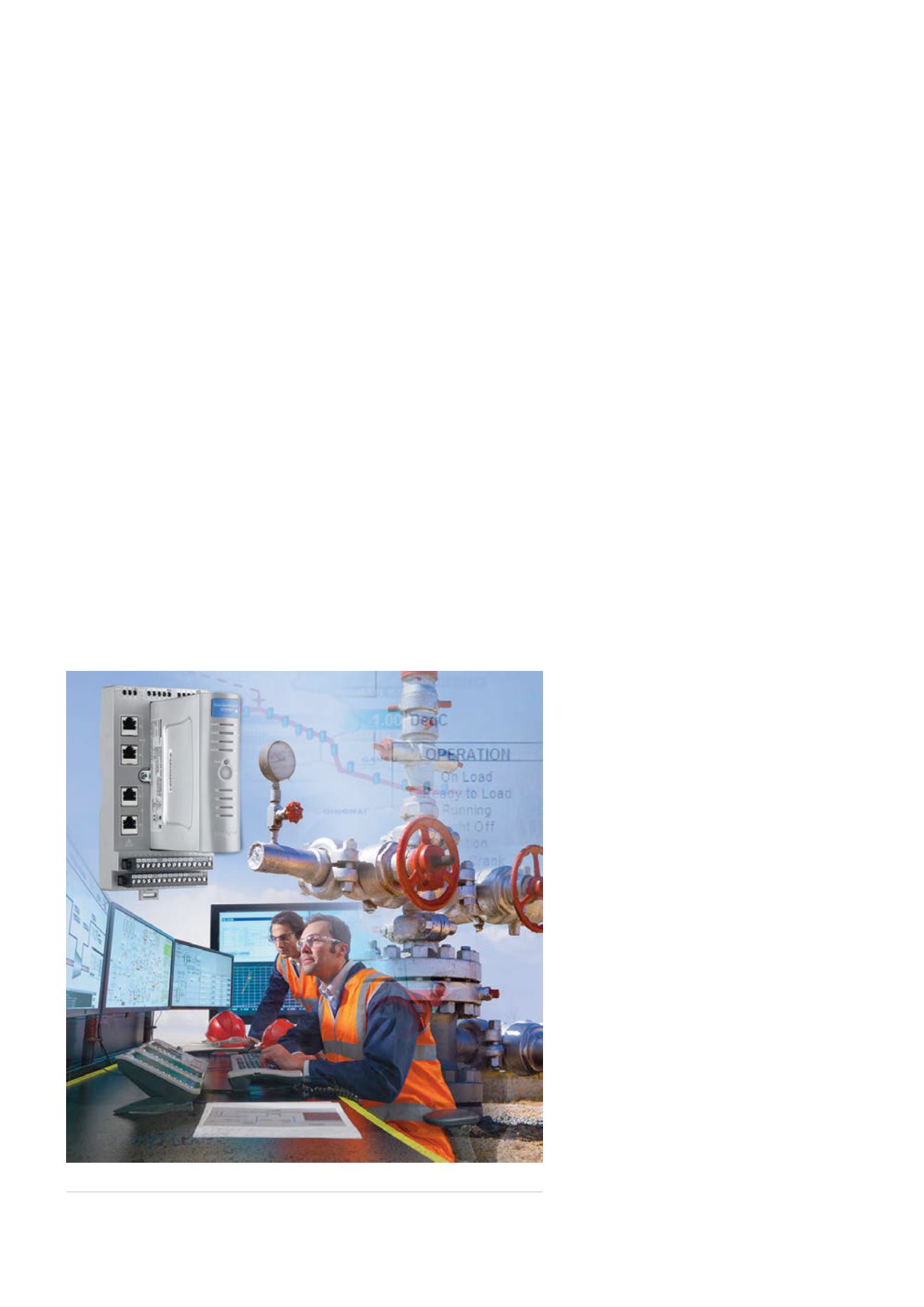
The latter is more achievable, and the frequency with
which some data needs to be sent should be considered.
However, restricting the volume of data too much risks
limiting the benefits achieved from big data, by limiting the
information available to controllers to make decisions. What
is required is a solution that limits the quantity of data sent to
the control room, while preserving its quality.
In fact, such a solution is well-established. Smart
instruments have long provided a source of high quality,
useful information already installed at remote sites. Onboard
diagnostics provide information about the equipment status
and health, without the need for calculations or processing in
the central control room.
If these are combined with diagnostics run on a remote
terminal unit (RTU) and other local subsystems such as radios,
it can produce a fault model on the RTU itself. This will
indicate where there may be a system problem (as opposed
to a process issue) and can be used to generate a common
fault alarm or alert to be sent to the central control room.
Much of the data in this model is therefore processed locally,
and, where bandwidth is limited, only the fault notification
needs to be sent, rather than all data from the transmitter as a
matter of course.
Of course, smart instruments are nothing new. However,
the legacy RTU units in upstream and pipeline applications are
often dated and unable to use this information. In particular,
a lack of support for HART, the most common protocol for
smart instruments, is a key limiting factor. While some RTUs
do allow users to enable HART by adding additional hardware,
this adds to costs, both directly and through increased power
consumption.
The solution, adopted by Honeywell’s RTU2020, is to
include HART enabled analog I/O as standard, so that digital
data from HART transmitters and valves connected to the
onboard I/O can be accessed by the RTU locally – as well as
by the Field Device Manager asset management system for
remote configuration and maintenance.
By including HART, the traditional RTU strengths of data
logging and good sub-system communications with local
devices are combined with better fault modelling, both
directly on the RTU and at central locations. The result
is better decisions about the actual health of the remote
asset, while operating within the limitations of the available
bandwidth.
Effective data handling
Despite the benefits, however, this still leaves controllers
having to prioritise the data coming in, and it is crucial to
address the challenges of limited human resources and skills
shortages when considering this. The SCADA system HMI is
central to this, which offers two overlapping aspects.
The first is visualisation tools. Users need standardised
dashboards and a user interface that is tailored to their
role. Controllers should be able to see a summary of the
key equipment they are responsible for,
with all the key parameters relevant to that
equipment. More sophisticated solutions, such
as Honeywell’s Experion® PKS SCADA, drill down
to individual equipment and automatically
generate displays based on templates that
show all the key relevant data for that type of
device. Standard filtering enables controllers to
quickly access task-based views, displaying all
compressors or instrument alarms, for example.
The second aspect is that these filters and
templates are used to embed experienced
controllers’ knowledge in the SCADA system.
Templates automatically determine the key
information users need to see, according to the
particular type of equipment and task under
consideration. Filters may list by equipment
type or be determined by more complex
calculations and rules – displaying, for example,
pipeline compressors that are under-performing,
according to predefined criteria.
The result is that the knowledge of the best,
most experienced controllers is captured to
guide others to the most relevant information
and through complex tasks.
Extending the efficiencies
There are also two further benefits of using a
template-based, rules-based approach to the
HMI.
Figure 3.
Big data can be extremely valuable to upstream oil and gas operators.
62
World Pipelines
/
JULY 2015


